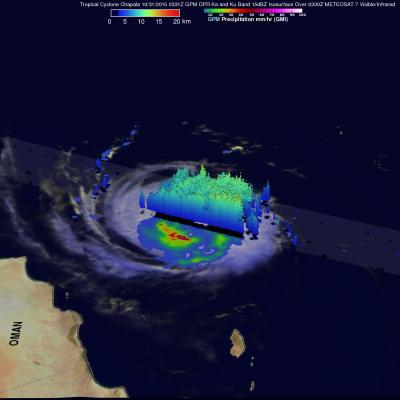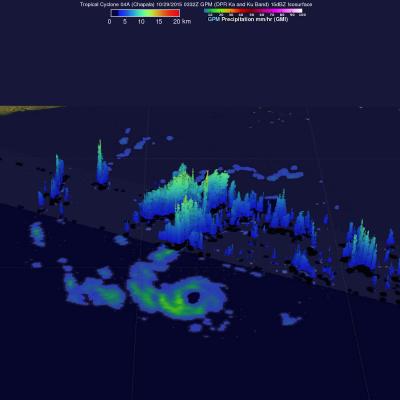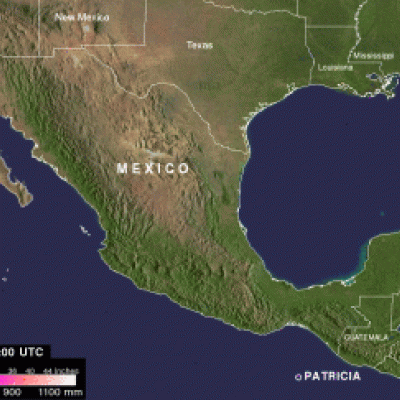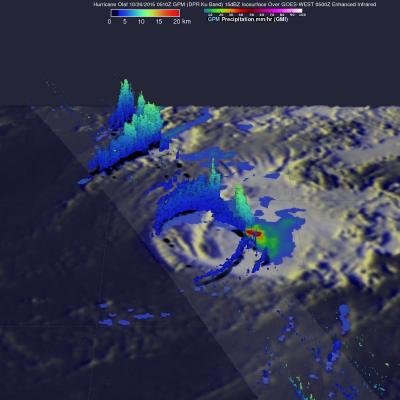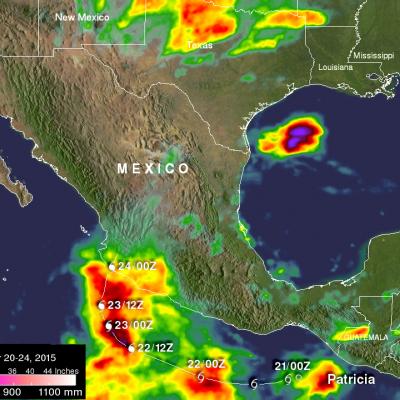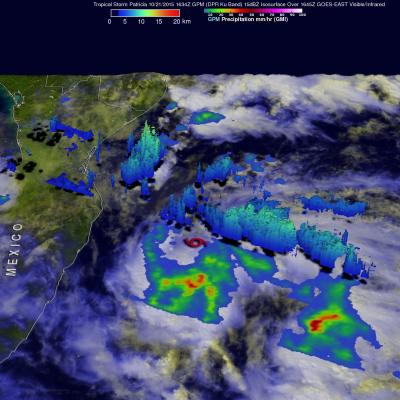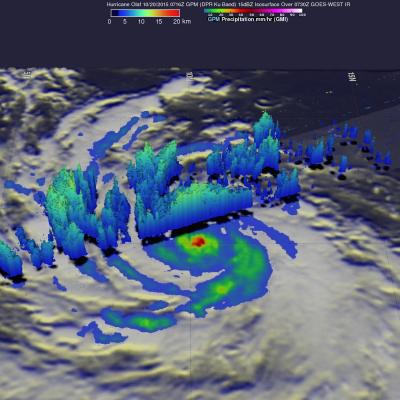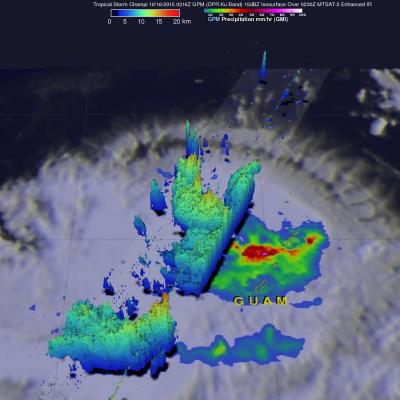GPM Sees Chapala Traveling Toward Yemen
Powerful tropical cyclone Chapala continues moving inexorably toward Yemen. Chapala has weakened from category four intensity a couple days ago while maintaining a course that steers it toward Yemen. The GPM core observatory satellite had a good look at tropical cyclone Chapala on October 31, 2015 at 0331 UTC. GPM's rainfall data are shown overlaid on a 0330Z METEOSAT-7 Visible/Infrared image. At that time Chapala was a very powerful tropical cyclone with maximum sustained winds of about 117 kts (135 mph). GPM's Microwave Imager (GMI) instrument measured rain dropping at a rate of over 88 mm


